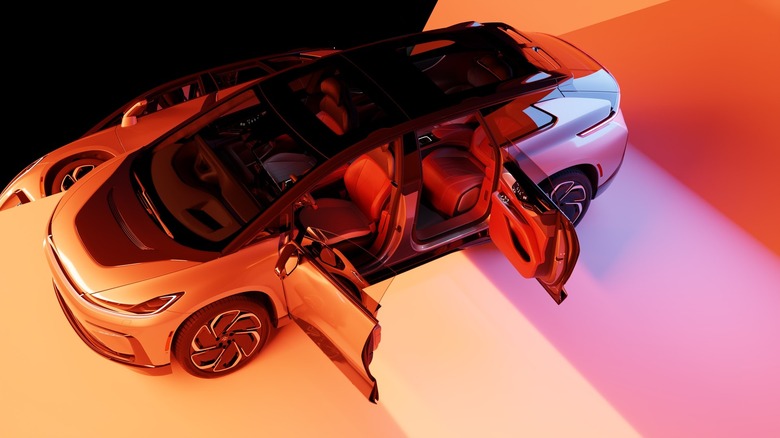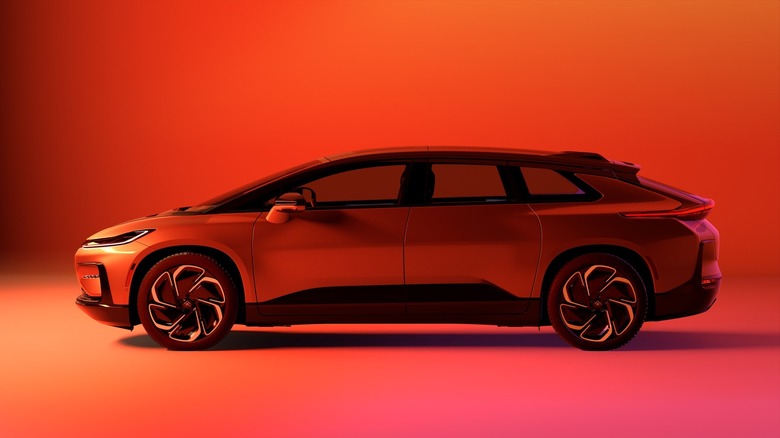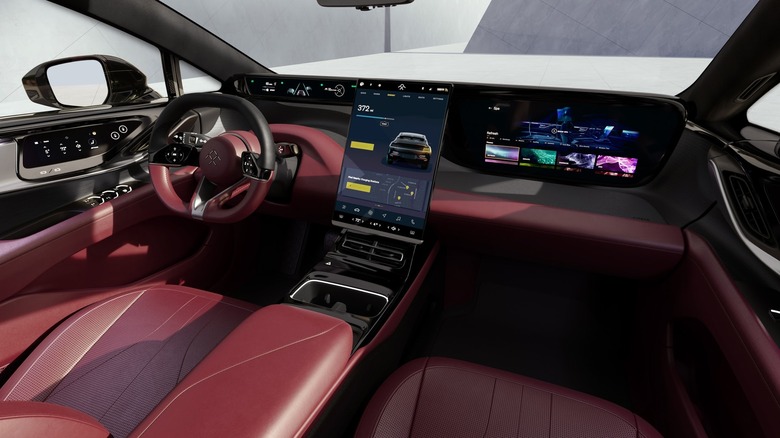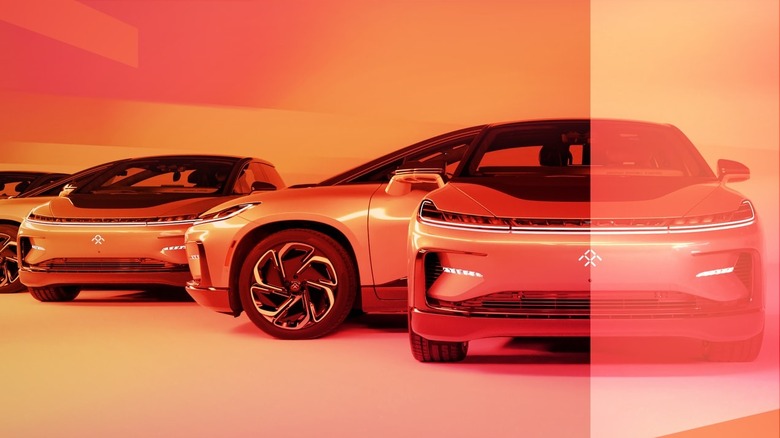Faraday Future Is Shipping Confusion, Not A Car
As goofy as the company can be with the Cybertruck, and as wacky as Elon Musk's statements often are, at least you can answer basic questions about what exactly any given Tesla is. The same cannot be said about Faraday Future. May 31st marks the official initial delivery of its first ever car, the FF 91 2.0 Futurist Alliance. Here are the numbers: The FF 91 has a tri-motor EV drivetrain that generates 1,050 horsepower and 1,458 pound feet of torque. It can supposedly accelerate from zero to 60 miles per hour in 2.27 seconds. It has a 142 kWh battery, and has an "EPA Certified" range of 381 miles (although that may come into question). Lastly, it costs $309,000 for the launch edition.
All other factors about the FF 91 are up in the air as the introductory slideshow (consisting of 90 slides) and its one hour and 42 minute long launch video elicited more questions than actual answers. The vehicle itself is arguably just as mysterious as it was when it was first shown to the world in 2017.
What is the FF 91?
First and foremost, the FF 91 doesn't really fit into any existing classification of vehicle. It's not an SUV. It's technically a sedan, according to the EPA classification, and could be construed as a wagon. That's not particularly strange, as the Polestar 4 doesn't ride along any existing design conventions. The wrinkle comes with how Faraday Future describes it. According to the company, it's a "Magic All-in-One": as fast as a hypercar, as comfortable as a sedan, and offering the ride height of an SUV.
The issue is made even less clear when you see the vehicles it is compared against. Faraday Future contrasts its car to the Ferrari SF90 Stradale, the Mercedes-Maybach EQS, the Mercedes-Maybach S 680, and the Rolls-Royce Spectre. Aside from the EQS and S 680 originating from Mercedes, none of those four vehicles have anything to do with each other, and two of them — the SF90 and the S 680 — aren't even EVs. This would be like Tesla comparing its Model S to a Ford Expedition. The only similarity those two vehicles share are four wheels and a windshield.
Faraday Future headlines this comparison with the phrase "Even elephants can dance the ultimate dance." It's a fairly indecipherable combination of words, though does imply the automaker thinks its new EV is an elephant.
AI everywhere
AI can be used in a lot of ways that may be annoying to hear about, but at least make sense. You can follow the logic of why someone would want to automate a long paper for school, or chat with an AI, or write long section of code. However, Faraday Future claims to be using AI in ways that don't follow traditional conventions of logic. It's worth noting that the FF 91 isn't even called a car. It is instead referred to as "The Ultimate AI TechLuxury Product." That is not a typo. The FF 91 is said to feature "All-AI, All-Hyper, All Ability, and Co-Creation." Regardless of what that string of words may actually mean in practice, "All-AI" is quite the claim.
Faraday Future is using AI tech for not only automated driving features, but also suspension components and how the car itself functions. The vehicle is even said to include a bespoke AI, that learns how the driver operates and tunes the body and suspension accordingly.
Additionally, the interior of the vehicle will be AI-galore, although it's not yet known what that means in practice. But Faraday Future claims it will have the world's first generative AI inside a vehicle. How that will play out is another question entirely: it probably won't be used for editing pictures in Photoshop while you're driving. The interior isn't even called an interior, because of course it's not. It's instead dubbed "The Third Internet Living Space."
What does the app do?
Most of Faraday Future's presentation painted the picture that its "car" was the greatest invention to ever exist on planet Earth, and excelled in every possible category and metric. Well, just as long as you pay no attention to the fact that Faraday Future not only invented those metrics to exceed, it doesn't even live up to the claims, as there are factually faster, probably more comfortable, and longer range EVs on the market.
The final piece of the enigma that is the Faraday Future FF 91 2.0 Futurist Alliance is the associated app and the ecosystem therein. The app is called "Farad" and is described as a "Global Developer and Creator Value Co-Creation and Co-Sharing Platform." Which, once again, tells you vanishingly little about what the app actually does. Attempting to glean any information whatsoever from official press releases is a fruitless endeavor. Judging by screenshots, there is a "Co-Creator Points" system and social networking features, although it is unclear as to how those points will ever be used.
Is this a serious effort?
Innovation and creativity are almost always positives when trying to launch a car. Most of Tesla's lineup started out as far-fetched ideas, and now, for better or worse, the cars are a smash-hit. As boring as it sounds, Faraday Future needed to convince investors, potential buyers, and even competitors that it was a serious automaker, making a real product you would eventually see on public streets.
That isn't what happened. Instead, the resulting FF 91 2.0 Futurist Alliance is a bizarrely shaped orca of a vehicle, with a mouthful of a name, and which costs as much as a house.
If Faraday Future is lucky (and that's a big "if"), it will sell all 300 FF 91s. Even then, that likely won't do much to move the needle for investors. Even the customers who end up buying the $300,000-plus vehicle might not know what they have, because all of the advertisements and product descriptions are filled with enough buzzwords and meaningless superlatives to make anyone's head spin. Here's hoping things become clearer as the first of the EVs arrive in brave buyers' garages.




